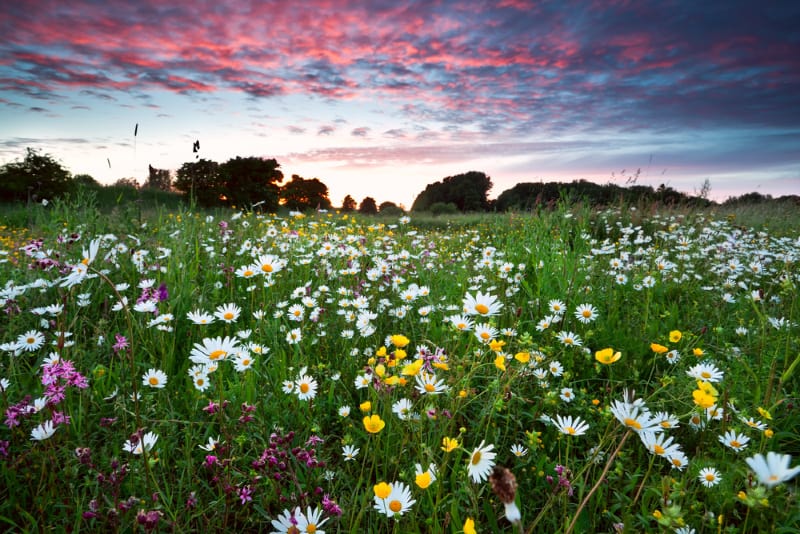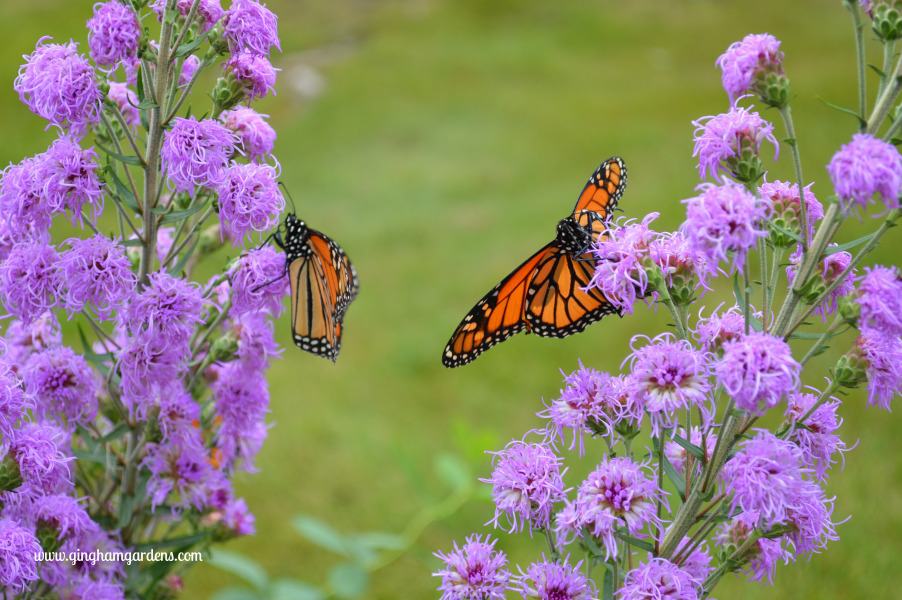Native Plants for Your Flower Garden (Why All The Hype)
There seems to be a turn towards including native plants in our flower gardens. Is it just a trend? Trends come and go, so I hope not! I believe most gardeners already include native plants in their gardens, although perhaps unknowingly. So why all the hype? Do you need native plants in your flower garden?
The science behind native plants is astounding and somewhat complicated. Especially if you aren’t into horticulture or science. I’m not claiming to know everything about native plants… quite the contrary. This post is about keeping it simple enough for the average home gardener to understand the importance and ease of adding native plants to their flower gardens.
This post may contain affiliate links. If you click on
one of the links and make a purchase,
I may receive a small commission at no additional cost to you.
See full disclosure here.
What is a native plant?
Let’s see if I can break this down, so it’s not a boring science lesson.
Here’s the best definition of native plants I could find from Wikepedia and if you want to get the scientific nitty gritty, you can check out what else they have to say about Native Plants:
“Native plants are plants indigenous to a given area in geologic time. This includes plants that have developed, occur naturally, or existed for many years in an area.”
So, basically, a native plant naturally occurs in certain areas; or, better yet, God made it.
A cultivar is a cultivated variety of a plant and a hybrid plant is the result of the cross pollination of two cultivars. Cross pollination can happen naturally, or more commonly by plant breeders. Cultivars and hybrid plants are often cultivated to breed out undesirable characteristics of a plant, like diseases or aggressiveness, etc.
So, in short, our ecological system needs native plants and they are just one piece of the puzzle. Native plants are favored by pollinators and provide a natural habitat and seeds for birds and other critters. The process of hybridization generally reduces the nectar and pollen in cultivars and hybridized flowers. So, in order for our pollinator friends to get all the nutrients they need, native plants are necessary.
Some Things to Keep in Mind When Searching for Native Plants for Your Flower Garden
Just because it’s native, doesn’t mean it belongs in your garden or landscape.
For example, Basswood trees (a/k/a American Linden) are beautiful trees that have sweet smelling flowers in the spring and the bees love them while they are flowering. Guess who else loves linden trees… Japanese Beetles. So while American Linden trees are a lovely tree, if you have a Japanese Beetle problem, you might not want to add one to your landscape. Nothing against Linden trees, I actually have one in my yard.
Another good example is Ostrich Fern (Matteuccia struthiopteris). Ostrich Ferns are a Minnesota native wildflower, so why wouldn’t you want them in your gardens? Well, because it’s crazy aggressive even to the point of being invasive in many garden settings. It’s fine in large, densely shaded areas, but for the average sized shade garden, it takes an incredible amount of work to keep it in check.
The point here is to do your research and don’t purchase a plant, tree or shrub just because it has the label “native.” Do your research!
Are Wildflowers the Same as Native Plants?
I love wildflowers! If I’m driving down the road and I see a field or meadow of wildflowers, I want to stop and take a picture. Even more so when I’m on vacation and not in my own area. However, I do not want a wildflower garden in my yard. It’s really just not my thing. It’s totally okay if it’s yours. But hear me out, wildflower gardens can easily get out of hand and it’s nearly impossible to keep a wildflower garden weeded. So, then you have a few wildflowers and a bunch of weeds.
In my opinion, wildflowers are beautiful in a natural setting such as a meadow or prairie, just not in residential yards. Again, if it’s your thing, go for it. If you have a weed-free wildflower garden, please leave a comment and tell me about it. Better yet, if you have a picture, email it to me, pretty please.
So did you know that wildflowers and native plants are not necessarily one and the same? In researching for this post, I came across this interesting article from the Michigan State University website – Wildflowers and Native Plants: What’s the Difference. Pop over when you’ve finished up here to check it out.
Have you ever thrown a wild flower mix into your garden to see what would happen? Did it work for you? I’m guessing you introduced a bunch of stuff that you weren’t able to identify. If you decide you’re okay with the wild look, read the label and know what you are getting, before you purchase a wildflower mix. Here is a very interesting and informative article regarding wildflower seed mixes – Growing Wild: A ‘How-To’ Guide For Avoiding Weed-filled Wildflower Mixes
Can Native Plants and Flowers Coexist With Non-Native Plants?
There are very differing schools of thought on this topic which I won’t go into here. I don’t have any scientific proof behind it, but I’m going with yes, native flowers and non-native flowers can coexist together. Why? Because I’ve grown both native plants and non-native plants for many years in my flower gardens and they live very nicely together. Bees, butterflies and other pollinators are alive and well in my gardens and they seem to enjoy the cultivars and hybrid plants as well as the natives.
That being said, invasive non-native plants generally cannot coexist with native plants. Take for instance the common ditch lily (hemerocallis vulva) that you see along roadsides and in many yards. Many don’t believe me, but it’s invasive and it will crowd out most everything – native plants and non-natives alike. A new plant can grow rather quickly from just a piece of tuber, so they are difficult to get rid of. If you have ditch lilies in your gardens, please don’t give them to other unsuspecting gardeners. Now don’t go confusing cultivar daylily plants with ditch lilies, because I’m a collector of cultivar and hybrid daylilies. And, no daylilies are not native plants. Lol!
A favorite native plant in my gardens – Meadow Blazingstar Liatris. Monarch butterflies love them too!
Intentionally adding native plants to your flower gardens is certainly each gardener’s choice. Although, I’m not a native purist, I do believe there is a need for us to take responsibility and do whatever we can to improve our environment and to create a habitat for pollinators. Want to learn more about attracting bees, butterflies and other pollinators to your garden, see How to Attract Pollinators to Your Garden for some excellent tips.
How to Find Native Plants for Your Flower Garden
I really wanted to come up with something catchy like 20 Amazing Native Plants to Add To Your Gardens, but because Gingham Gardens has readers from all over the world, I could not. Simply because what is native in my area, might be invasive in yours. That is even true within gardening zones. For instance, Zone 4 encompasses a large portion of Northern USA and a native perennial plant that is perfectly fine in my garden might be too aggressive for someone in a different locale but still in zone 4.
That is why it’s so very important to do your own research and learn what questions to ask when shopping for native plants. The Audubon Society has a really cool native plant search database that searches by zip code. Their database includes trees, shrubs and perennial plants.
If you are shopping at your local garden center, most generally have a native plant section. First of all, before you purchase a plant in the native plant section, that usually comes in a small 4-6” pot, check the regular perennial plants for that same plant in a larger pot for less money. Garden Centers are cashing in on the trend of unsuspecting and new gardeners wanting to add native plants to their landscape. Be sure to take a few minutes and google “is [plant name] aggressive” or, ask a knowledgeable gardening center employee.
Never dig up native plants from roadsides, meadows or parks, etc. In many states it’s illegal. Plus, you don’t want to introduce a plant into your gardens that you will later regret.
14 Plants Not to Include In Your Gardens (Even if They Are Free) lists both native and non-native plants that are invasive and aggressive, and that you may want to steer clear of.
Learn More About Native Flowers and Plants
The best place to learn more about native plants and flowers in your area, is your state’s Department of Natural Resources, state universities, or your local cooperative extension. I believe you’ll find a wealth of information on these trusted sites.
Just do a little research on your own before you go plant shopping and ask for “native” plants. Not all, but some native plants are very aggressive and will take over your gardens and are totally not worth the headache of trying to keep them in check.
I hope you’ve gained a better understanding about native plants plants for your flower garden and why they are important to our environment. Do you have a mix of both native and non-native plants in your gardens? Or, are you a native purist? Please leave a comment at the end of the post and let me know. I’m always interested in hearing from you.
Happy gardening,
Joanna
p.s. Follow Gingham Gardens on Pinterest for lots of great gardening ideas and tons of gardener’s eye candy. Gingham Gardens is also on Facebook – come say “hi.”
Pins for your Gardening Board on Pinterest:





